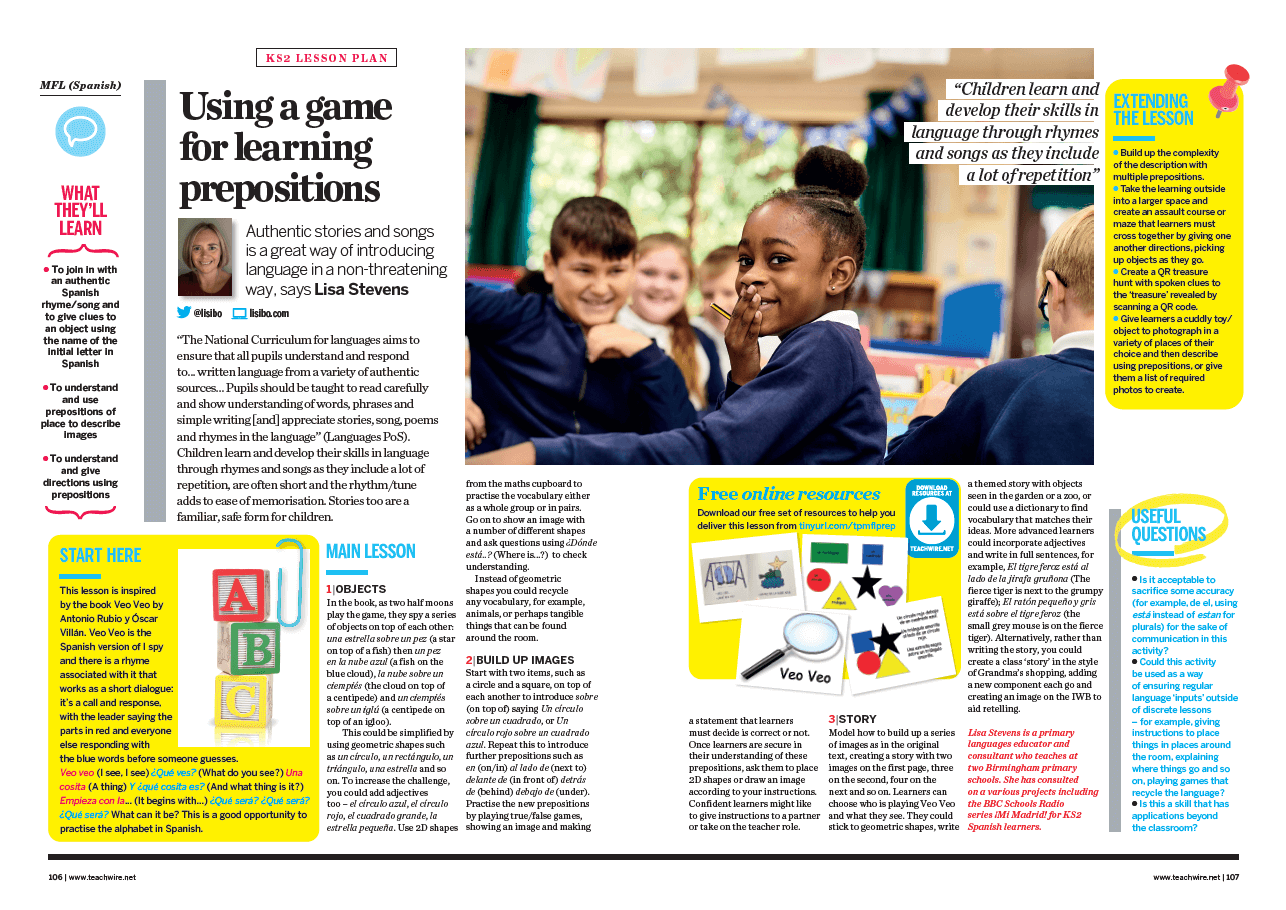Authentic stories and songs is a great way of introducing language in a non-threatening way, says Lisa Stevens…
The National Curriculum for languages aims to ensure that all pupils understand and respond to… written language from a variety of authentic sources… Pupils should be taught to read carefully and show understanding of words, phrases and simple writing [and] appreciate stories, song, poems and rhymes in the language” (Languages PoS).
Children learn and develop their skills in language through rhymes and songs as they include a lot of repetition, are often short and the rhythm/tune adds to ease of memorisation. Stories too are a familiar, safe form for children.
What they’ll learn
- To join in with an authentic Spanish rhyme/song and to give clues to an object using the name of the initial letter in Spanish
- To understand and use prepositions of place to describe images
- To understand and give directions using prepositions
Lisa Stevens is a primary languages educator and consultant who teaches at two Birmingham primary schools. She has consulted on a various projects including the BBC Schools Radio series ¡Mi Madrid! for KS2 Spanish learners. Find her at lisibo.com and follow her on Twitter at @lisibo.














